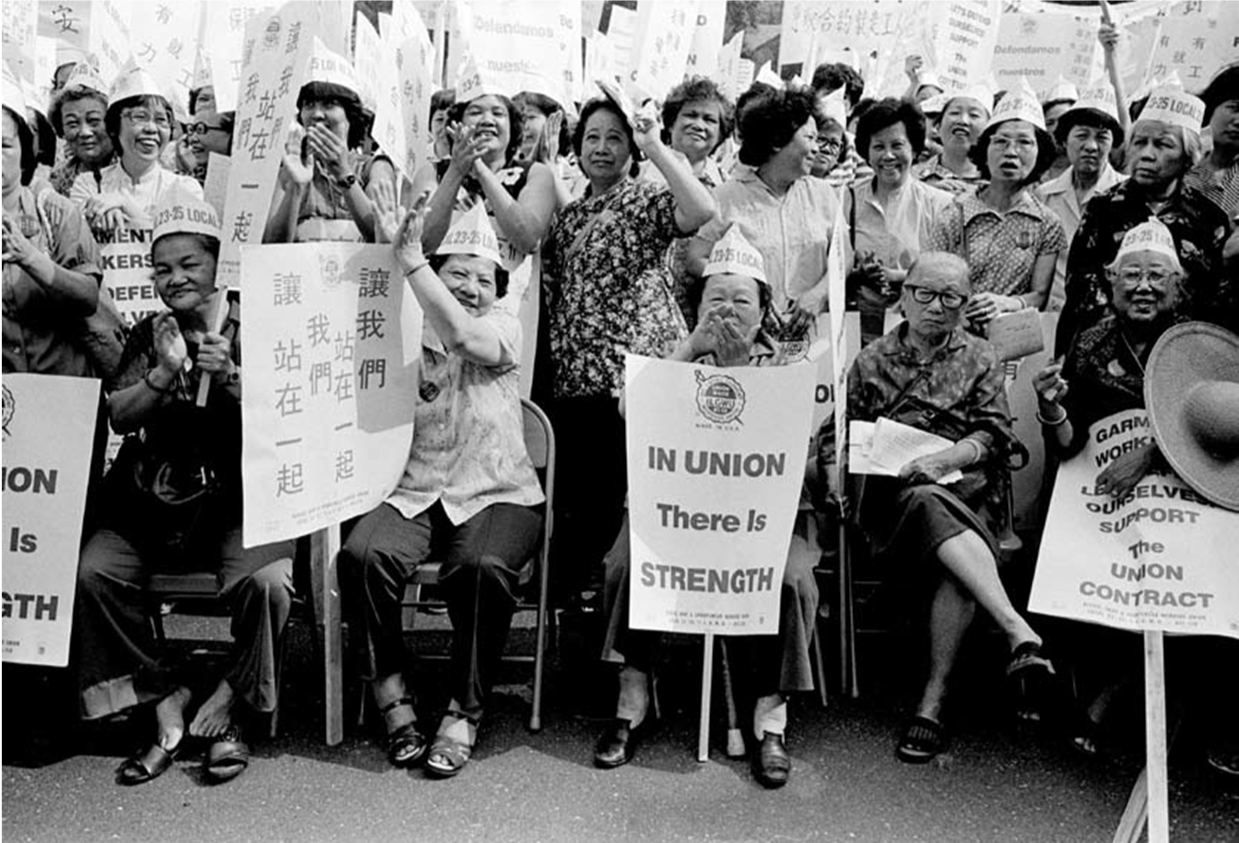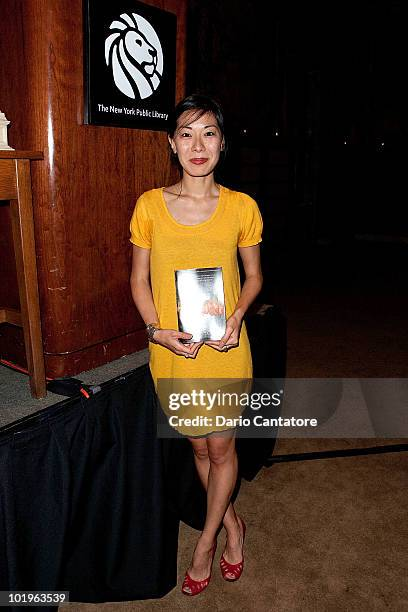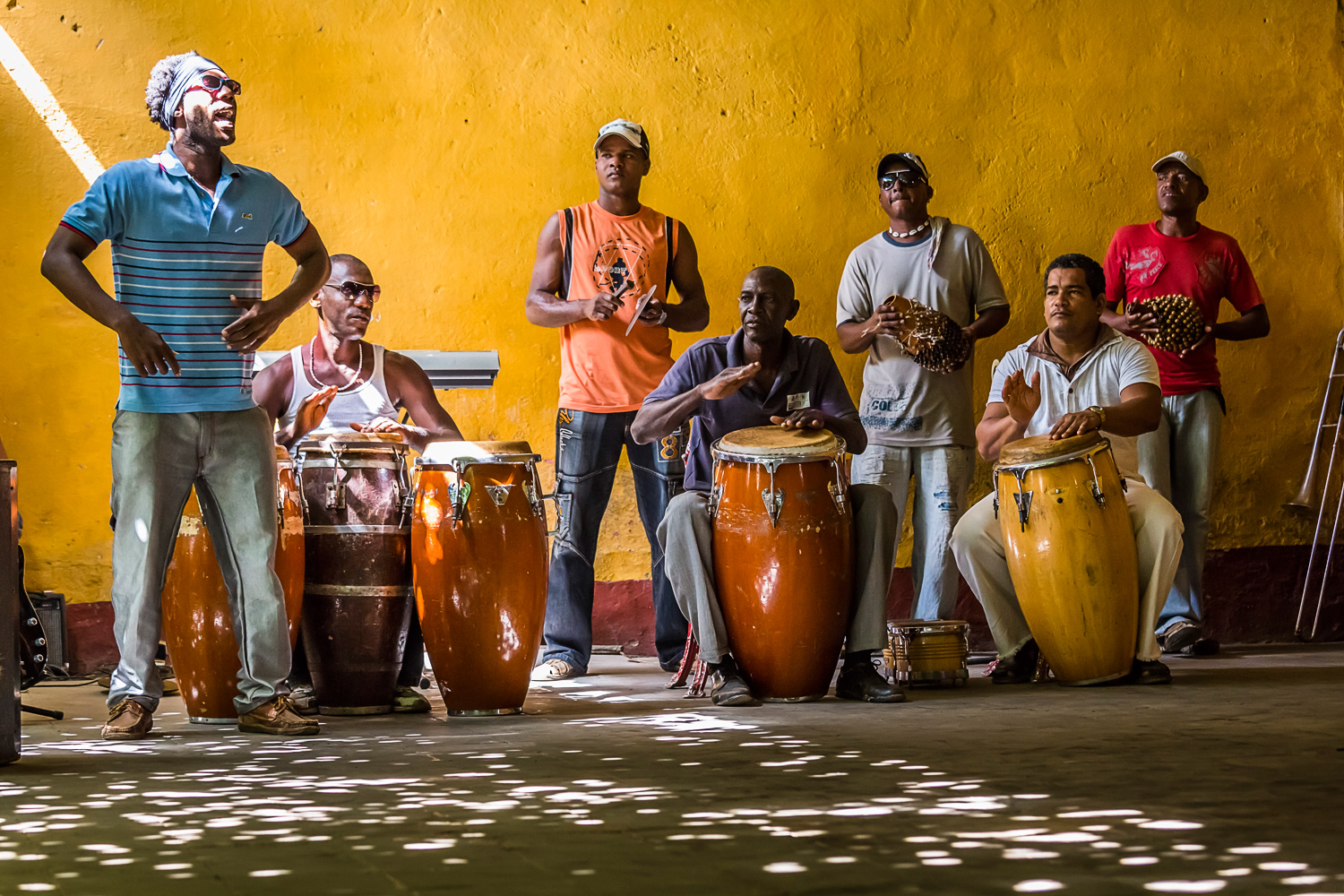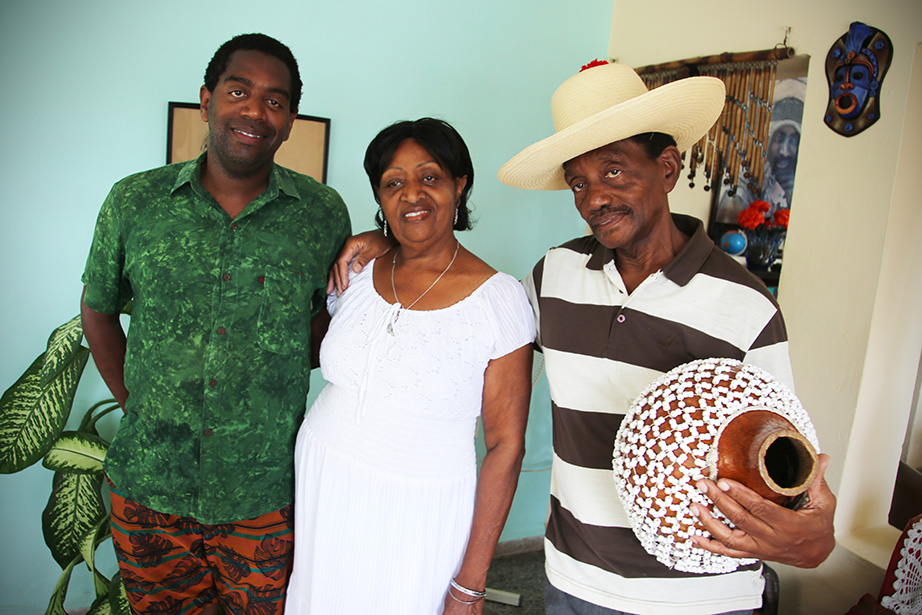Asian American women’s history is a rich tapestry woven with resilience, struggle, and triumph, yet it remains largely obscured in mainstream narratives. The newly unveiled exhibition at the Schlesinger Library seeks to illuminate these often-overlooked stories, showcasing artifacts that span 150 years of Asian American culture and women’s history. From the photographs of Ainu and Visayan women displayed at the 1904 St. Louis World’s Fair to the modern movements led by Asian American women for justice, this exhibit emphasizes the importance of recognizing their contributions. Historical exhibits like “Illuminate: Contextualizing Asian American Women’s Stories Through the Archives” invite viewers to engage deeply with the complexities of identity and representation. By reclaiming the narratives of these women, we not only honor their legacy but also challenge the historical erasure that has long persisted.
The chronicles of Asian American women are critical to understanding the broader scope of American history. These narratives encompass a diverse range of experiences, reflecting the interplay between culture, gender, and social justice. The exhibition at the Schlesinger Library, titled “Illuminate,” sheds light on the often unrecognized efforts and achievements of women from Asian backgrounds throughout history. It features a compelling collection that invites visitors to delve into personal stories and cultural expressions that have shaped the Asian American identity. This exploration not only enriches our understanding of women’s roles but also encourages a reevaluation of how we perceive historical events and figures.
The Importance of Documenting Asian American Women’s History
Asian American women’s history has been historically overlooked, often relegated to the margins of American narratives. Events like the 1904 St. Louis World’s Fair exemplify this erasure, where Ainu and Visayan women were displayed as ‘living exhibits’ without recognition of their identities or stories. Archival initiatives, like the one at the Schlesinger Library, are crucial in uncovering these forgotten narratives, providing a means to reflect on their roles in both history and culture. This reexamination highlights the significance of preserving women’s history, as it allows society to reconnect with its diverse heritage and the contributions of those who have shaped American culture silently but profoundly.
Moreover, the Schlesinger Library’s exhibit “Illuminate: Contextualizing Asian American Women’s Stories Through the Archives” specifically aims to bridge gaps in historical knowledge. By showcasing materials amassed over 150 years, the exhibit encourages visitors to reconsider preconceived notions about Asian American women’s roles. As curator Victor Betts articulates, the invisibility of these histories has significant implications, not just for understanding the lives of Asian American women but for comprehending the wider American experience. Each artifact, whether a photograph or a legal document, serves as a testament to resilience and an invitation for broader conversations about representation in both history and contemporary society.
Asian American Culture and Representation in Arts
The intersection of Asian American culture and women’s representation in the arts can be vividly observed in the current exhibit at the Schlesinger Library. Artistic contributions play a critical role in reshaping narratives, allowing Asian American women to reclaim their stories in various forms. From visual art to literature, Asian American women are increasingly asserting their presence in the arts, crafting works that are steeped in personal and collective experiences. This cultural expression not only enriches the American arts scene but also serves as a powerful tool for social change, challenging stereotypes and elevating voices that have been historically marginalized.
In creating visual dialogue through exhibitions like “Illuminate,” artists such as Shaina Lu are reinterpreting historical events and experiences in contemporary contexts. Her translucent illustrations that accompany archival materials breathe new life into historical narratives, inviting viewers to engage with the past in innovative ways. This artistic practice fosters a deeper understanding of the complexities surrounding Asian American women’s identities today. By weaving together art and history, the exhibition not only showcases the artistic talents of Asian American women but also highlights the vital role of cultural representation in promoting inclusivity and diversity within the broader fabric of American society.
The Archives: A Window into Historical Erasure
The archives at the Schlesinger Library unveil a stark reality about the historical erasure of Asian American women’s contributions. Through collaborative efforts, students and archivists are rediscovering lost stories that reveal the richness of these women’s experiences. For instance, the legal battles of Chinese women like Ah Fong, who sought justice in the 19th century, are critical in understanding the broader implications of immigration laws and women’s rights. These archival treasures serve not only to educate but also to urge society to confront the systemic inequities that have perpetuated silence around these crucial narratives.
Additionally, the contemporary landscape of archiving and preserving Asian American women’s stories is evolving. With an increased focus on representation, collections are expanding to include diverse voices and experiences. The initiative to document the stories of influential chefs and authors like Grace Zia Chu and Madhur Jaffrey highlights a shift towards empowering Asian American women to narrate their own histories. This evolution in archiving practices contributes to a richer understanding of Asian American culture and fosters a sense of belonging within the broader American narrative.
Legacy of Asian American Women in Activism
Asian American women have long been at the forefront of social justice movements, often spearheading efforts for change amid challenging circumstances. The exhibit at the Schlesinger Library makes this legacy visible, linking past activism to contemporary issues such as anti-Asian violence and women’s rights. As local artist Shaina Lu points out, the historical contributions of Asian American women in movements for justice serve as a foundation for ongoing advocacy. By revisiting their stories, we recognize the crucial roles these women have played in shaping community organizing and civil rights.
Moreover, the exhibition highlights how activism among Asian American women has not only challenged injustices but has also fostered unity and resilience within diverse communities. As students study figures like those documented in the archives, they gain insight into the struggles and triumphs that accompanied the fight for equity and justice. This rich history of activism serves as a powerful reminder of the interconnectedness of diverse social movements and the importance of solidarity in the pursuit of a more just society. By honoring these legacies, the project invites a new generation to engage with and continue the work of those who came before.
Engaging with History: Educational Impact of the Exhibit
The educational journey crafted through the Schlesinger Library’s exhibit provides unique insights into Asian American women’s history. Co-taught by Victor Betts and historian Erika Lee, the spring undergraduate course challenges students to critically evaluate archival materials and their implications. Engaging with historical documents such as photographs and legal records allows students to confront the realities of erasure and visibility in history. This hands-on learning experience empowers them to become advocates for recognizing the contributions of women who have shaped the Asian American narrative.
By examining their own assumptions and biases, students like Sophia Wang are inspired by the courage of women like Ah Fong who fought for their rights. The scholarly engagement found within the exhibit prompts a broader discussion about how women’s history can be told through various lenses. The educational initiatives intertwined with the exhibit emphasize the importance of incorporating diverse perspectives in academic discourse, making Asian American women’s history a critical component of the American story that students and the community alike are encouraged to explore.
The Role of Art in Archival Contextualization
Art stands as an essential medium for contextualizing the narratives presented within the archives of the Schlesinger Library. The artworks commissioned for the exhibit not only enhance the visual appeal but also reinforce the themes of visibility and erasure within Asian American women’s histories. Shaina Lu’s creations exemplify how contemporary artists can bridge the past and present, shedding light on the intricacies of cultural identity and historical representation. Through her illustrations, the blend of artistic expression and archival material invites viewers to engage with these histories in an immersive and meaningful way.
Furthermore, integrating art into historical exhibits challenges conventional storytelling methods, allowing artists to reinterpret and recontextualize marginalized narratives. This approach cultivates a space for dialogue about the complexities of Asian American women’s experiences, enriching the viewer’s understanding. Art becomes a powerful vehicle for storytelling, transcending simple documentation and transforming history into a dynamic conversation about identity, culture, and resilience. In this way, the synergy between archival material and artistic interpretation crucially supports the mission to amplify Asian American women’s stories.
Redefining Historical Narratives through Student Engagement
Student engagement in the collaborative research process at the Schlesinger Library plays a pivotal role in redefining the narrative surrounding Asian American women’s history. By delving into archival research, students become not only consumers of history but active participants in its interpretation. Their fresh perspectives encourage a reassessment of historical narratives that have often been linear and one-dimensional. Through projects focused on individual and collective experiences, students work to unearth the multidimensionality of Asian American women’s lives, which can challenge stereotypes and inspire contemporary dialogue about identity.
The reflective nature of this engagement fosters a greater appreciation for the complexities of women’s history. As students share their findings about figures like Ah Fong and the marginalized groups at the World’s Fair, they contribute to a richer tapestry of understanding that enriches the collective memory. This process of rediscovery not only honors the stories that have been silenced but also underscores the active role that young scholars can play in shaping a more inclusive historical narrative. Through their research, these students illuminate the varied experiences of Asian American women, emphasizing their significance within the broader American landscape.
The Influence of Contemporary Asian American Women’s Voices
Contemporary Asian American women are increasingly making their voices heard across various platforms, from literature and film to social media. This newfound visibility stands in contrast to past generations, whose stories were often told through a lens of exoticism and marginalization. By narrating their own experiences and challenges, present-day Asian American women are reshaping the dialogue around identity and belonging in America. This evolution in storytelling underscores the necessity of diverse voices in understanding the Asian American experience, paving the way for future generations to share their journeys.
Furthermore, the impact of contemporary voices is evidenced in the archives themselves, where modern contributions are being documented alongside historical narratives. Female chefs and authors are sharing their stories, enriching the cultural heritage and expanding the understanding of what it means to be Asian American today. As these women assert their identities and challenge societal norms, they provide inspiration for younger individuals navigating their cultural landscapes. This dynamic interplay between past and present, where stories are no longer relegated to the margins, fosters a greater sense of community and empowerment within the Asian American populace.
Revisiting Historical Archives: A Path to Healing
The process of revisiting historical archives serves as a path to healing for many within the Asian American community. By acknowledging the stories that have been overlooked or misrepresented, the Schlesinger Library’s exhibit allows for a collective reflection on the pain and triumphs experienced by Asian American women throughout history. This healing process is essential, especially in the wake of increased anti-Asian sentiments during recent years, as it reconnects individuals with their heritage and fosters resilience against ongoing challenges. The act of uncovering these narratives contributes not only to personal identity but also to communal strength.
Moreover, this journey through historical archives creates a space for dialogue and understanding among diverse populations. As Asian American women’s stories are brought to light, they encourage empathy and solidarity with the broader struggles against racism and sexism that have persisted throughout history. The exhibit’s commitment to illuminating these narratives invites individuals from all backgrounds to engage with the complexities of Asian American women’s experiences, fostering a sense of shared humanity. In acknowledging past injustices, the community can work towards a more inclusive future where all stories are valued and celebrated.
Frequently Asked Questions
What is the significance of the ‘Illuminate’ exhibit at the Schlesinger Library regarding Asian American women’s history?
The ‘Illuminate’ exhibit at the Schlesinger Library is significant for highlighting the often-overlooked narratives of Asian American women throughout history. It showcases artifacts and archival materials that span 150 years, prompting a reevaluation of their roles in American history. By featuring stories of women like those displayed at the 1904 St. Louis World’s Fair, the exhibit encourages visitors to confront assumptions about Asian American women’s contributions and visibility.
How does the Schlesinger Library preserve Asian American women’s history?
The Schlesinger Library preserves Asian American women’s history through its extensive archival collections, which include photographs, political posters, and personal narratives. The library actively works to document and archive the stories of Asian American women, recognizing their contributions from the 19th century to contemporary times. Recent efforts include collaborations with students and scholars to uncover these histories, ensuring that Asian women’s stories are acknowledged and included in the broader narrative of American history.
What themes are explored in the exhibition contextualizing Asian American women’s stories?
The exhibition explores themes of erasure, visibility, and agency within Asian American women’s history. It addresses how these women have been portrayed as both objects of curiosity and powerful narrators of their own stories. By analyzing historical events such as the Chinese Exclusion Act and the internment of Japanese Americans, the exhibit highlights the intersections between race, gender, and immigration, prompting viewers to reconsider the historical narratives surrounding Asian American women.
In what ways have students contributed to the understanding of Asian American women’s history at the Schlesinger Library?
Students have actively contributed to understanding Asian American women’s history by conducting research and utilizing archival materials for their coursework. For instance, they examined the lives of women like Ah Fong, who fought legal battles for their rights. This hands-on approach not only enriches their learning experience but also uncovers lesser-known stories that are crucial for understanding the broader context of Asian American women’s history.
Why is the history of Asian American women often marginalized, according to the Schlesinger Library’s exhibition?
The history of Asian American women is often marginalized due to systemic biases that push these narratives to the periphery of mainstream historical accounts. The Schlesinger Library’s exhibition emphasizes that Asian American women have historically been rendered invisible, highlighting how their significant contributions have been overlooked in favor of more dominant narratives. This marginalization calls for a critical examination of how American history is constructed and who gets to be included in that narrative.
How does the ‘Illuminate’ exhibition relate to larger movements in Asian American culture?
The ‘Illuminate’ exhibition relates to larger movements in Asian American culture by emphasizing the importance of recognizing and amplifying Asian American women’s voices. It aligns with contemporary efforts to address racial and gender injustices, showcasing how art and archival materials can foster dialogue about identity, representation, and inclusion. By exploring these themes, the exhibition contributes to the ongoing cultural reawakening and reclamation of Asian American women’s stories within broader American history.
What role do archives play in the documentation of Asian women’s stories?
Archives play a crucial role in the documentation of Asian women’s stories by preserving artifacts, photographs, and personal accounts that might otherwise be lost. Institutions like the Schlesinger Library serve as repositories for these narratives, allowing researchers and the public to access and engage with the histories of Asian American women. This archival work is vital for ensuring that future generations can learn and reflect on the diverse experiences and contributions of these individuals to American society.
What impact do exhibitions like ‘Illuminate’ have on public perception of Asian American history?
Exhibitions like ‘Illuminate’ can significantly impact public perception of Asian American history by illuminating the complexities of Asian American women’s experiences and contributions. By showcasing their stories and challenging dominant narratives, these exhibitions help to foster greater awareness and understanding of the diverse tapestry that makes up American history. They also encourage audiences to reflect on the importance of inclusivity in historical discourse, promoting a more nuanced appreciation for all cultural contributions in the U.S.
| Key Point | Description |
|---|---|
| Schlesinger Exhibit | Highlights the often-overlooked past of Asian American women through various artifacts and narratives. |
| Historical Context | The exhibition includes items from significant events, including the 1904 St. Louis World’s Fair where Ainu and Visayan women were displayed as ‘living exhibits’. |
| Collaboration in Education | The exhibit was co-created by students and faculty, emphasizing the importance of co-teaching in learning about Asian American women’s history. |
| Archival Discoveries | Archival research revealed important yet untold stories of Asian American women, highlighting their contributions to U.S. history. |
| Cultural Representation | The exhibition uses contemporary art and archival materials to challenge existing narratives and engage viewers in deeper reflections. |
| Ongoing Work | Efforts are being made to expand collections related to Asian American women to help correct historical narratives. |
Summary
Asian American women history is a rich and often overlooked tapestry woven through the broader narrative of American history. The Schlesinger Library’s exhibit, “Illuminate: Contextualizing Asian American Women’s Stories Through the Archives,” reveals the significant yet marginalized roles of Asian American women through artifacts, photographs, and research. This exhibition not only showcases their contributions but also invites viewers to reflect on and challenge the historical narratives that have sidelined these important stories. By engaging students and the community in this exploration, the exhibit underscores the necessity of recognizing and valuing the experiences of Asian American women as an integral part of the American historical narrative.



